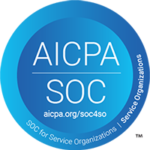Last year, NBC News told the story of a Florida man with multiple sclerosis and a $650 monthly prescription who found the same specialty drug—a generic form of Tecfidera—at an Ohio pharmacy for $85. As one of a growing number of cash pharmacies, it rang up the purchase without asking for the man’s insurance card.
How and why a prescription price can be lower without insurance is an explanation for another time. But it’s often true with generic medications, which happen to be nine out of 10 prescriptions filled today.
Consumers have discovered this pleasant, sometimes puzzling surprise with increasing frequency:
- In 2019, only 5% of prescriptions were purchased at a pharmacy’s “cash” (non-insurance) price.
- In 2022, a Prescryptive Health study reported that 61% of consumers surveyed had paid cash prices for prescriptions even though the drugs were covered by their health insurance.
- In the same 2022 study, 50% of those surveyed living in urban markets said it’s less expensive to pay out of pocket than to use insurance.
Cash-only digital pharmacies like Mark Cuban’s CostPlus Pharmacy have based business models on this reality. For years, prescriptions purchased using GoodRx and other discount card programs have been based on the lowest prices participating pharmacies are willing to sell the drugs.
The Meaning of Cash Pharmacy
Should everyone start carrying cash again? No, “cash” in this context refers to a pharmacy’s price for a given drug when insurance isn’t used. A pharmacy determines its cash price by what it paid to acquire the drug, plus a dispensing fee and whatever markup it deems appropriate.
A cash or discount card price may be lower or higher than an insurance plan’s negotiated price with an in-network pharmacy—or a member’s copay or out-of-pocket cost for it, which can vary from fill to fill due to multiple factors. It’s not hard to see why consumers would gravitate to whichever is lower.
Lowest cost isn’t the only factor in their decisions, however. Other reasons cited by consumers in the Prescryptive study:
- 18% knew they wouldn’t hit their deductible anyway.
- 22% did so because their prescribed drug wasn’t on their plan’s formulary.
- 29% went the cash route because their preferred pharmacy was not in-network.
For anyone lacking prescription coverage, cash pharmacies provide critical access to affordable medication. For many patients, distance from, and transportation to, the closest brick-and-mortar pharmacy is an equal or bigger barrier to access. Cash pharmacies with direct-to-door shipping can be a lifeline.
The Cash Pharmacy Conundrum
For the Florida man with MS, $85 vs. $650 each month is an easy choice. Depending on the size of his annual deductible, however, it may not be the best call every fill. Paying down the deductible will take longer. Maybe his health plan will apply cash purchases to the deductible, maybe it won’t. (Medicare does not.)
When it comes to cash pharmacies and discount cards, there are some tradeoffs for patients:
- Lower out-of-pocket cost up front but slower deductible paydown
- Consistent pricing and no pharmacy network constraints, but searching and shopping is the patient’s responsibility
- Drugs may not be subject to quantity limits, but clinical oversight and patient support may be less
When a patient is covered by a health plan and pays a cash price, the plan saves 100% on the cost of that prescription. However, there are pros and cons for payers, too:
- Plan members may stay in deductible phases longer, but utilization and medication therapy management can be more challenging
- Affordability boosts medication adherence, but there’s no data stream to prove it
- Fewer claims reduce spend but may complicate PBM relationships
Will Cash Pharmacies Rule the Day?
It may be hard to envision a world where most prescriptions are paid for outside of the pharmacy benefit. But who could have imagined one where the same generic drug can cost one patient $10 and another patient $100 or more?
Higher list prices, cost-shifting and -sharing, high-deductible plans, formulary contractions and other realities are driving more consumers to cash options every year. They are practicing consumerism in pharmacy like they would with groceries or gasoline. That can be good for patients and good for payers.
Right now, most consumers either search for or stumble onto a cash-pay option. They often have more than one. At the same time, there may be effective clinical alternatives that cost less through insurance and can work toward their deductibles. The choices are rarely binary.
Consumers need a simple, singular platform where they can see and compare all available insurance, cash and discount card prices along with various fulfillment options. They need accurate pricing and deductible status in real time. Whichever choice they make, they should be able to execute it as easily as ordering a pizza. At times, they also need clinical support with changing or transferring a prescription to take advantage of a lower-cost option.
A comprehensive transparency and navigation platform makes all the above possible. Since many covered members are trending toward cash and discount cards, payers can meet that demand and reduce plan spend in the process. When they are plugged into this marketplace platform and provide it to members, they can also close an important data loop.
Patients and plans both benefit from better medication access, affordability and adherence. Cash pharmacies and discount cards—in tandem with the pharmacy benefit—can help improve all three.



